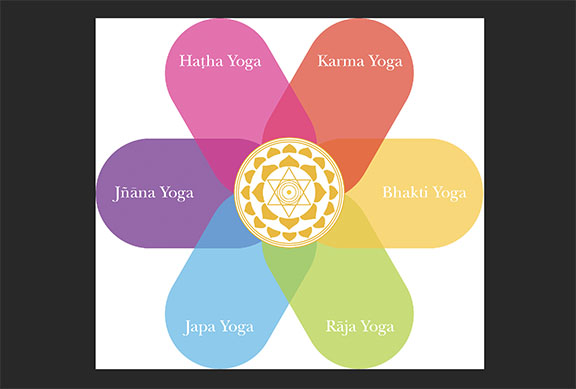 The first thing I love about Yoga is that it’s something you can do when everything else out there is falling apart. I know this has brought many people to Yoga. It’s a way to assert your own power and control over your life, even when you seem powerless to change what’s happening “out there” in the world.
The first thing I love about Yoga is that it’s something you can do when everything else out there is falling apart. I know this has brought many people to Yoga. It’s a way to assert your own power and control over your life, even when you seem powerless to change what’s happening “out there” in the world.
Yoga is, of course, a vast subject, but it’s also very simple. Sri Swami Satchidananda would say, “Yoga is simple. Be good and do good.” I would add to that “Feel good,” because that is what you get from a Yoga practice. If you’ve never experienced this, it’s a little hard to swallow how a few movements and breathing could make you feel so much better. So, I guess the first thing I love about Yoga is the movement. You get to move! It begins with asana.
But it doesn’t stop there. That brings me to what I love about Integral Yoga. Yoga has changed a lot in the United States over the past 20 years, often becoming more of a physical workout than anything else. Here is where I love the Integral approach. It truly is an “integrated” system, designed to “integrate” the individual through various practices.
Once the body and breath are taken care of and calmed down or tuned up through Hatha Yoga, we turn to the mind. There are many ways to get the mind on Yoga in the Integral system: you could read and reflect on the Yoga Sutras of Patanjali, to which I have referred earlier, through what’s called Raja Yoga, aiming at ethical perfection, basically, and the ways you live your life.
If you are more of an intellectual skeptic, you could look into Jnana Yoga, which deals with the ultimate reality of what truly exists and who you really are—a kind of peeling of the onion to see what’s there and there and there.
Bhakti Yoga is the Yoga of devotion, appropriate for someone who feels deeply spiritual and expands his or her world through oneness with the cosmos.
Karma Yoga can take you to that altruistic place that may arise spontaneously from exposure to the practice. Feeling your heart expand can give you a launching pad for Karma Yoga, or selfless service. It’s not just about you and your Yoga but about how you can help in the bigger sense.
Finally, there’s Japa Yoga, which can get you there through vibration, sound, and chanting. This is a non-intellectual approach that really goes more around the mind than through it, tapping into the Source through a vibration bigger than you yet which you also produce.
These six approaches of Integral Yoga are a great, holistic way not only through Yoga but actually as a way of accessing a deeper sense of connectedness throughout your life. I personally love all these approaches and enjoy each at various times. Simply put, I love how it makes me feel and the direction it gives to my life.
About the Author:
 Karl Krishna Spicer, RYT 500, began practicing Yoga 25 years ago, beginning at the Integral Yoga Institute of New York. The mixture of movement, breath and attention was an immediate revelation and the peaceful after-effects of class made a huge impression on him, especially in such a chaotic city as New York. After many years of taking occasional classes, and much home practice, Krishna found his way to Basic Yoga Teacher Training at Integral in 2017. After graduation, Krishna was offered a regular class at Integral, and the 25-year journey from beginner practitioner to enthusiastic adept to certified instructor was complete. The study of Yoga is, of course, a life-long pursuit, and the journey continues. He is certified to teach Hatha I, II, Meditation and has certifications in Therapeutic Yoga I, II. In his other life, Krishna is a professional musician, playing bass, guitar and shakuhachi flute.
Karl Krishna Spicer, RYT 500, began practicing Yoga 25 years ago, beginning at the Integral Yoga Institute of New York. The mixture of movement, breath and attention was an immediate revelation and the peaceful after-effects of class made a huge impression on him, especially in such a chaotic city as New York. After many years of taking occasional classes, and much home practice, Krishna found his way to Basic Yoga Teacher Training at Integral in 2017. After graduation, Krishna was offered a regular class at Integral, and the 25-year journey from beginner practitioner to enthusiastic adept to certified instructor was complete. The study of Yoga is, of course, a life-long pursuit, and the journey continues. He is certified to teach Hatha I, II, Meditation and has certifications in Therapeutic Yoga I, II. In his other life, Krishna is a professional musician, playing bass, guitar and shakuhachi flute.

